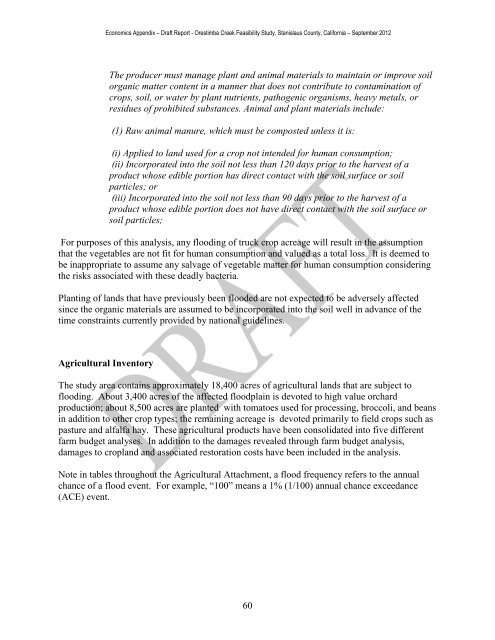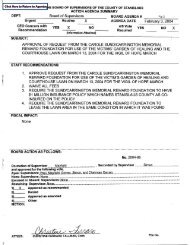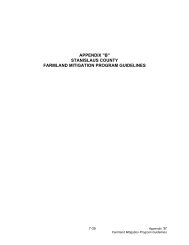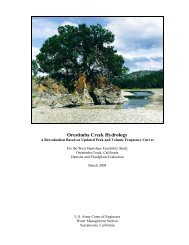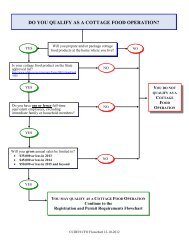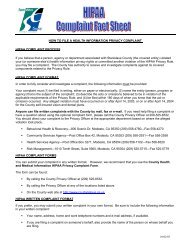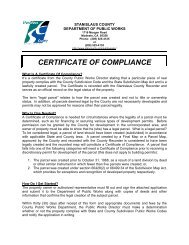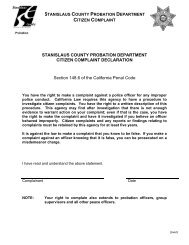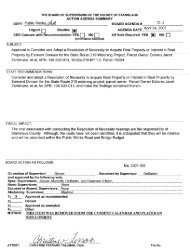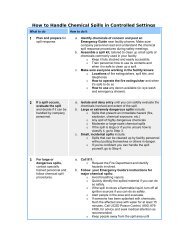Orestimba Creek Feasibility Study - Stanislaus County
Orestimba Creek Feasibility Study - Stanislaus County
Orestimba Creek Feasibility Study - Stanislaus County
Create successful ePaper yourself
Turn your PDF publications into a flip-book with our unique Google optimized e-Paper software.
Economics Appendix – Draft Report - <strong>Orestimba</strong> <strong>Creek</strong> <strong>Feasibility</strong> <strong>Study</strong>, <strong>Stanislaus</strong> <strong>County</strong>, California – September 2012<br />
The producer must manage plant and animal materials to maintain or improve soil<br />
organic matter content in a manner that does not contribute to contamination of<br />
crops, soil, or water by plant nutrients, pathogenic organisms, heavy metals, or<br />
residues of prohibited substances. Animal and plant materials include:<br />
(1) Raw animal manure, which must be composted unless it is:<br />
(i) Applied to land used for a crop not intended for human consumption;<br />
(ii) Incorporated into the soil not less than 120 days prior to the harvest of a<br />
product whose edible portion has direct contact with the soil surface or soil<br />
particles; or<br />
(iii) Incorporated into the soil not less than 90 days prior to the harvest of a<br />
product whose edible portion does not have direct contact with the soil surface or<br />
soil particles;<br />
For purposes of this analysis, any flooding of truck crop acreage will result in the assumption<br />
that the vegetables are not fit for human consumption and valued as a total loss. It is deemed to<br />
be inappropriate to assume any salvage of vegetable matter for human consumption considering<br />
the risks associated with these deadly bacteria.<br />
Planting of lands that have previously been flooded are not expected to be adversely affected<br />
since the organic materials are assumed to be incorporated into the soil well in advance of the<br />
time constraints currently provided by national guidelines.<br />
Agricultural Inventory<br />
The study area contains approximately 18,400 acres of agricultural lands that are subject to<br />
flooding. About 3,400 acres of the affected floodplain is devoted to high value orchard<br />
production; about 8,500 acres are planted with tomatoes used for processing, broccoli, and beans<br />
in addition to other crop types; the remaining acreage is devoted primarily to field crops such as<br />
pasture and alfalfa hay. These agricultural products have been consolidated into five different<br />
farm budget analyses. In addition to the damages revealed through farm budget analysis,<br />
damages to cropland and associated restoration costs have been included in the analysis.<br />
Note in tables throughout the Agricultural Attachment, a flood frequency refers to the annual<br />
chance of a flood event. For example, “100” means a 1% (1/100) annual chance exceedance<br />
(ACE) event.<br />
60


